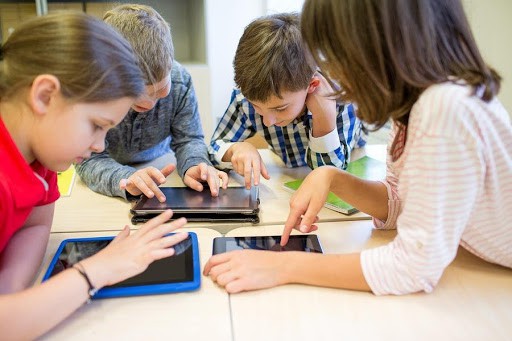Until recently, students had to carry dozens of books with them, manually write term papers and theses, search libraries for necessary literature, and, again, hand-write all the information. Now books can be downloaded to a tablet or laptop, the text can be typed in Word, which will also be checked for errors, and the page with the necessary information can be copied or photographed on the phone. But progress does not stand still, and every day more and more advanced technologies come to help students.

Writing services
Even if your educational institution uses different teaching gadgets, you are not freed from completing written assignments. Time is always a decisive factor in managing your student’s life efficiently. Various sites help students complete a specific project on time or search for relevant material to base the work on. When you lack time or knowledge to finish the work on your own, you can send a request to the writing service of your choice and enjoy the time the way you always dreamt of. So stop asking yourself if anyone can do my PowerPoint for me and select the service that corresponds to your needs.
Online Editors
Of course, Word corrects errors, but only grammatical and punctuation (and the latter at a very primitive level). And to check the style, referencing, and formatting, you should better contact the online editors. The Grammarly program will help you with the English language rules, and it has many benefits and has helped thousands of students. This program has a free and a paid version. Each is installed as a google extension and automatically gives hints on how and where to edit the text.
And for those who want to learn the rules according to which Grammarly suggests corrections and re-phrasing, there are different grammar manuals and textbooks available online.
Interactive whiteboards and tables
Interactive displays have made static reality more dynamic and vibrant. For example, NovoTouch creates unique tables and boards that even a preschooler can work with. Such technologies help students create team projects, use visualization in presentations, and make learning more diverse and exciting.
15-20 years ago, it was a state-of-the-art display system and interactive tool. The first who began to master new interactive technologies were teachers of computer science. They launched the transition from a conventional display system (projector screen) to Interactive Whiteboard. Teachers of all disciplines note the high efficiency of using interactive whiteboards in the educational process. Interactive whiteboards installed in classrooms allow the teacher to make the best contact with the student and make learning interesting and personal.
Today, an interactive whiteboard in the classroom is the standard for a modern educational institution. From year to year, the tendency to study anytime, anywhere is gaining popularity. With the help of an interactive whiteboard, you can fully and in detail convey information for each student or school child.
Augmented reality
Augmented reality is what makes not only a trip to a museum interesting but also a lecture on abstract concepts. Even though augmented reality is still rarely used in education, there are already many exciting developments.
For example, the American Karen Schrier invented a game that, for several years, she used to tell her students about the famous Battle of Lexington. Using the app on the phone, students navigated a real battlefield, took part in a battle, and independently tried to answer questions that even now cause controversy among American historians.
This technology is beneficial for medical students. Modern doctors’ training is inconceivable without the use of innovative technologies, which, together with traditional education, makes it possible to form their high competence to meet the requirements of practice and ensure the quality of their future activities.
Smart campus
In the educational process and traditional teaching academic disciplines, new information technologies are increasingly used, contributing to a change in presenting the material. Computer technologies in teaching humanities increase students’ assimilation of information, make the learning process more effective and productive, and motivate obtaining knowledge of a theoretical and practical nature.
Progress has even reached the premises of educational institutions – though so far only to American ones. Smart campuses are a new approach to organizing the educational process. A special device reads information about the student at the institute entrance, and individual reminders are immediately sent to the student. These are schedules, and notifications about tests, and messages from teachers.
Always in touch
Some universities use technology to exchange information between students and faculty electronically without access to the Internet. They operate based on energy-efficient long-range networks. It is a radio communications approach used for devices and large wireless telemetry networks. Its peculiarity is low power consumption and wide territorial coverage, applicable to teaching students and schoolchildren.
Studying is definitely challenging, but innovative technologies make it so much fun! Get the most of your student’s life and use your precious time in the best way possible today.

